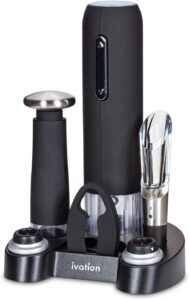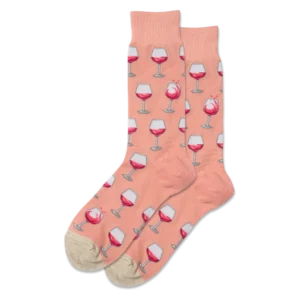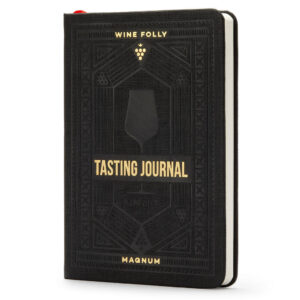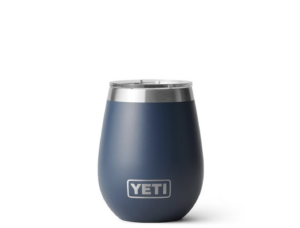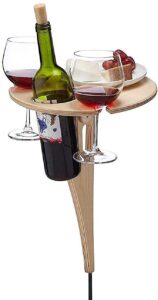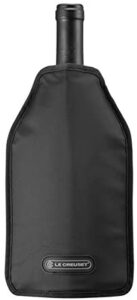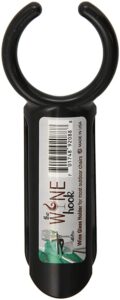There’s something so exciting about the possibilities of a new bottle of wine, an entire world of wine aromas and flavours just waiting to be discovered. Even tasting the same grape variety from two different vineyards can lead to two completely unique sensory experiences!
There are so many possibilities, in fact, that it can be a little hard to keep track, which is why we’ve compiled this handy cheat sheet. This wine aroma dictionary is your guide to the most common wine aromas—what they are, the chemical compounds and winemaking processes that cause them, and the wines and regions they’re commonly associated with. If you’ve ever wondered what it is you’re smelling when you get notes of citrus in a dry Riesling or enjoy a particularly peppery Syrah, this guide is for you.
Wine Aroma Dictionary: Table of Contents
Fruit Notes
Berries – Blackberry, Blackcurrant, Blueberry, Cherry, Strawberry, Raspberry
Citrus – Grapefruit, Lemon/Lime
Tree Fruit – Pear, Apple
Stone Fruit – Peach, Plum
Tropical – Banana, Pineapple, Melon, Papaya
Dried – Jam, Fig
Nutty & Toasted Notes
Almond, Bread, Coconut
Floral Notes
Floral, Rose
Spicy Notes
Cinnamon, Pepper
Herbaceous/Vegetal Notes
Grass, Herbs, Bell Pepper, Asparagus, Leaf, Mint, Olive, Tomato
Inorganic Notes
Graphite, Stone
Oak-Aged Notes
Smoke, Tobacco, Cedar/Oak, Coffee, Vanilla, Chocolate
Fruit Wine Aroma Notes
 Blackberry
Blackberry
A little sweet, a little tart, this common berry tasting note falls under the “black fruit” category of wine aromas and is frequently found in red wines grown in geographic areas with Mediterranean climates (temperate winters and hot summers). Blackberry is a surprisingly complex tasting note to isolate chemically—there are actually over 30 aroma compounds associated with blackberry notes in red wines! One 2012 study found that the presence of ethyl 2-hydroxy-4-methylpentanoate (ethyl leucate) was directly associated with blackberry aromas in Bordeaux wines, with ethyl butanoate acting as an important secondary compound that made the ethyl leucate more perceptible.
Associated Varieties: Syrah/Shiraz, Cabernet Sauvignon, Merlot
Associated Wine Regions: Bordeaux & Rhône Valley (Southern France), Barossa Valley (South Australia, Rioja (Central Spain), California
 Blackcurrant
Blackcurrant
Sometimes also referred to as “cassis”. Another black fruit tasting note, this sweet, tart berry is ubiquitous in Europe (especially the UK) but little-known in North America due to a US ban on planting blackcurrant that lasted from 1911 to 2003. The ban was instituted out of concern for a pine-killing fungus called blister rust that used blackcurrant bushes to spread, but overturned in most states in 2003 due to the development of fungus-immune varieties of the plant. While they can be eaten raw, blackcurrants are more commonly used for juice, jam, and preserves. Blackcurrant aromas and tasting notes are common in red wines, and are the result of 4-mercapto-4-methylpentan-2-one.
Associated Varieties: Cabernet Sauvignon; less frequently Nero d’Avola, Aglianico and Primitivo
Associated Wine Regions: Bordeaux (Southern France), but also anywhere Cabernet Sauvignon is grown
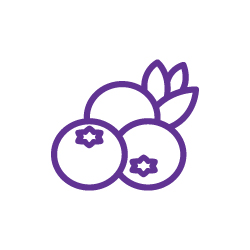 Blueberry
Blueberry
While a common flavour in many red wines, the compounds responsible for blueberry notes in wines have not been narrowed down. In fact, blueberry aroma compounds are a surprisingly under-researched subject in food chemistry as a whole. However, analysis of the flavour compounds of three different blueberry species in the US (highbush blueberries, lowbush blueberries, and rabbiteye blueberries) found similar flavour compounds across species, with the list dominated by terpenoids, C6 alcohols, and esters.
Associated Varieties: Petite Sirah, French Syrah, Mourvèdre, Malbec
Associated Wine Regions: California, Rhône & Provence (France)
 Cherry
Cherry
The meaning of “cherry” as a tasting note can be quite broad, as cherries can come in both black fruit and red fruit varieties, and be both sweet and tart in flavour. It’s important to make the distinction when doing your own tasting notes. In Beaujolais wines, cherry notes are often the result of a process called carbonic maceration. Unlike regular fermentation, which uses yeast to break down the sugars in grapes, in carbonic maceration bunches of grapes are sealed in a vessel filled with CO2 and begin to ferment from the inside out, a process called intracellular fermentation. This winemaking technique is known for producing extremely fruity wines with low tannins and acidity.
Associated Varieties: Gamay, Nebbiolo, Pinot Noir
Associated Wine Regions: Beaujolais, Northern Italy, New Zealand
 Strawberry
Strawberry
A common red fruit tasting note, strawberry notes in wine are often experienced as an aroma rather than a flavour, and can range from fresher berry aromas to “jamminess”. Strawberry notes appear in both brighter and more complex red wines, and even in some rosés. There are two common chemical compounds responsible for strawberry notes in wine: furaneol and ethyl methylphenylglycidate. Furaneol, also referred to as strawberry furanone, is used in the perfume and food industries to bestow strawberry notes, though in higher concentrations it takes on caramel rather than strawberry aromas. Ethyl methylphenylglycidate is also referred to as strawberry aldehyde and is frequently used to produce artificial fruit flavouring—in particular that of strawberries.
Associated Varieties: Zinfandel, Pinot Noir, Sangiovese, Nebbiolo
Associated Wine Regions: California, New Zealand
 Raspberry
Raspberry
Of the red fruit notes, raspberry is among the most tart, with an acidity that, combined with its fruitiness, makes for a very fresh berry wine aroma. You’ll commonly find raspberry notes in red wines of medium to high acidity. One of the main chemical compounds responsible for raspberry aromas is 4-(4-hydroxyphenyl)butan-2-one—aptly known as “raspberry ketone”.
Associated Varieties: Pinot Noir, Gamay, Barbera, Nebbiolo
Associated Wine Regions: Piedmont (Northwest Italy)
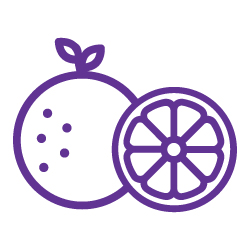 Grapefruit
Grapefruit
Tart, acidic citrus notes with a delicious hint of sweetness, grapefruit tasting notes are most common in white wines. Like with other citrus aromas, getting a hint of grapefruit in your glass generally suggests a grape grown in a cooler climate. Studies have found that moderate amounts of 3-mercaptohexanol and/or 3-mercaptohexyl acetate contribute strongly to grapefruit tasting notes in wine. However, when the quantity of these compounds passes a certain threshold, the notes tip over more in the direction of “tropical fruit”.
Associated Varieties: Sauvignon Blanc, Albariño, Vermentino, Assyrtiko, Colombard
Associated Wine Regions: California, Washington, Loire Valley (France), Marlborough (New Zealand)
 Lemon/Lime
Lemon/Lime
Like with grapefruit, the presence of lemon or lime tasting notes suggests a cooler climate grape that had a longer ripening time than those grown in warmer regions. Lime tasting notes have a greener quality and are found in grassier wines, but both lime and lemon notes are most likely to be found in white wines. Chemically, nerol and citronellol are two compounds responsible for more floral citrus aromas in wine, while limonene and citral bring in more of a zesty citrus peel aroma.
Associated Varieties: Riesling, Pinot Grigio, Sauvignon Blanc, Vermentino, Verdejo, Albariño, Roussanne
Associated Wine Regions: Chile, Germany, Alsace (France)
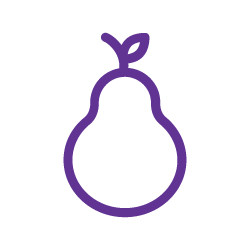 Pear
Pear
While pear might seem like a fairly straightforward flavour/aroma, when it comes to wine tasting notes there is an important distinction to be made. While fresh pear aromas can and do appear as notes in wine, there is another common descriptor that may not be familiar to North American wine enthusiasts—pear drop. A pear drop is a type of hard candy popular in the UK, which gets its flavour from an ester called isoamyl acetate. Interestingly enough, isoamyl acetate is commonly referred to as ‘banana oil’ and is perceived as having the aroma of both banana and ripe pear. In Beaujolais Nouveau wines, this compound is released as a result of carbonic maceration.
Associated Varieties: Pinot Gris, Beaujolais Nouveau, Pinot Blanc
Associated Wine Regions: Oregon, Austria
 Apple
Apple
Apple aromas are most often found in white wines grown in cooler climates. Like cherries, apple tasting notes can be split into fruitier, more sweet varieties (red apple) and tart, more acidic ones (green apple). In some wines, a high concentration of an ester called butyl acetate will create the aroma of Red Delicious apples. In other wines, malic acid might be the cause of a tart, green apple flavour and aroma.
Associated Varieties: Chenin Blanc, Pinot Gris, Grenache Blanc, Vermentino, Chablis
Associated Wine Regions: Germany, Austria, Chablis (France)
 Peach
Peach
There’s a reason peaches and cream go together so well. While peaches are one of the most common “stone fruit” tasting notes, the aroma of peaches has more to do with cream than it does most other fruity scents. Peach aromas come from a group of esters called lactones, which give not only peaches but milk, cream, and butter their signature scents! In the perfume industry, γ-decalactone and γ-undecalactone are two lactones heavily associated with peaches. Perfumists even call γ-undecalactone “peach aldehyde”, frustrating chemists the world over since, as you and I know, it is a lactone and not an aldehyde.
Associated Varieties: Marsanne, Grüner Veltliner, Viognier
Associated Wine Regions: Northern Rhône, Australia, Washington, California
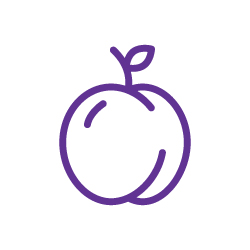 Plum
Plum
Plum is another stone fruit favourite, often seen in red wines, and can express itself in wine as a red fruit or black fruit note depending on not only the variety but on the ripeness of the grape. “Plum jam” is also sometimes used as a tasting note, denoting a greater sweetness with less acidity (see also: Jam). While there’s no one compound that we look to to indicate the presence of plum notes in a wine, chances are good the aroma comes across from a mix of esters—studies into the volatile components of fresh plums have found a whopping 58 different esters that contribute to their scent.
Associated Varieties: Merlot, Cabernet Sauvignon, Barbera, Nebbiolo, Touriga Nacional
Associated Wine Regions: Douro Valley, Piedmont
 Banana
Banana
Considered a tropical fruit flavour, banana aromas may also be referred to as “pear drop” notes, referring to the candy flavoured with isoamyl acetate (aka banana oil). You will commonly experience banana notes in white wines, sometimes with more fruity and floral wines, other times amongst other tropical tasting notes. (see also: Pear)
Associated Varieties: Gamay, Pinotage, Albariño, Assyrtiko, Colonnara
Associated Wine Regions: Beaujolais, South Africa, Rías Biaxas (Spain)
 Pineapple
Pineapple
While one of many tropical fruit notes you may find in white wines, pineapple aromas in your white wine might mean something quite special; that the wine was touched by noble rot. It doesn’t sound appetizing, but for many winemakers noble rot (or Botrytis cinerea) is a very desired fungus. When it comes in contact with grapes, it perforates the skin, allowing the water to evaporate and leave delicious concentrated sugars that make for sweeter, more complexly-flavoured wines. Surprisingly, the aromatic compound that creates pineapple aroma in these wines is furaneol, aka strawberry furanone. While this compound is responsible for strawberry aromas in some wines, furaneol also naturally occurs in very ripe pineapples, and depending on the wine will come across as pineapple rather than strawberry notes.
Associated Varieties: Riesling, Chardonnay, Sauvignon Blanc
Associated Wine Regions: Australia, Chile, Bordeaux (France), California
 Melon
Melon
One of the tropical fruit tasting notes, “melon” is used as a shorthand for specifically honeydew aromas. Fruity, refreshing, and sweet, you can find melon notes in rosé wines and even rosé champagnes, as well as white wines that are full-bodied and from warm climate areas. The melon wine aroma has not been linked to any specific aroma compound. Even in fresh melon, while 240 volatile compounds have been identified across different species, the degree to which each individual compound contributes to the aroma has not been pinned down. What we do know is that the most prominent group of volatiles in honeydew aromas are acetate-derivative esters.
Associated Varieties: Chardonnay, Pinot Grigio, Prosecco
Associated Wine Regions: Provence (Southeast France), California
 Papaya
Papaya
On the surface, this tropical fruit bears a certain resemblance to mango, as they’re both tropical fruits with bright orange flesh and greenish skins that take on yellow-y orange notes as they ripen. But as a flavour or aroma, papaya has a more muted sweetness, with a creamy quality that is closer to melon than mango. While it mellows out once ripe, papayas that have not had time to ripen have an extremely pungent, musty aroma, so it is sometimes used as a note for complex, fruit-forward wines like those affected by noble rot. You can also look for papaya aromas in warm-weather or late harvest wines that have a lot of sweet, tropical fruit notes.
Associated Varieties: Viognier, Chardonnay
Associated Wine Regions: California, Chile, Argentina, Italy, Australia
 Jam
Jam
Depending on who you are, describing a wine as being “jammy” can either be a compliment or the most devastating of insults. In either case, jamminess is used as a descriptor for very fruity wines that lack the acidity which can impart freshness to fruit flavours. Some refer to this as a “cooked fruit” or “cooked berry” flavour. Jamminess in a wine is a sign the grapes have been allowed to overripen, either having been left on the wine for longer or because of intense heat exposure. Ripening increases the sugar content of a grape, but when it reaches a tipping point begins to eat away at the fruit’s natural acidity, leaving a more concentrated sweetness with no balancing acid.
Associated Varieties: Zinfandel, Cabernet Sauvignon, Shiraz, Grenache
Associated Wine Regions: Australia, California
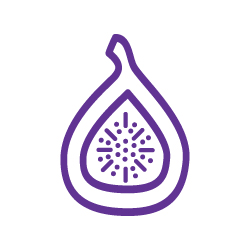 Fig
Fig
When used as a wine tasting note, fig refers to the fruit’s dried, not fresh, state. You will often find fig used alongside “jamminess” to describe the flavour or aroma of a wine, and sometimes even come across the combination of the two with “fig jam”. You can find instances of fig notes in full-bodied, red wines, but they most frequently crop up in fortified wines such as port. According to author Jane Anson, dried fruit notes in younger reds made with climate-sensitive grapes may be a sign that the wine will not age as expected but instead will suffer from premature oxidation, meaning it should probably be enjoyed fast.
Associated Varieties: Primitivo, Zinfandel, Cabernet Sauvignon
Associated Wine Regions: Portugal, Southern Italy
Nutty & Toasted Wine Aroma Notes
 Almond
Almond
Sometimes referred to as “marzipan” or “bitter almond”, how almond notes are brought about in wines can differ. When the result of the fermentation process, almond notes can be a sign of wine made with carbonic maceration. In other wines, they come from yeast, making an appearance in sur lie wines (wines in which the lees, or deposits of residual yeast, are not filtered out before bottling) or wines that undergo bâtonage, a secondary fermentation process in which the yeast is frequently stirred for several weeks to impart flavour to the wine, after which it is filtered out and bottled as normal. Regardless of the process, the compound responsible for the almond notes in wine remains the same—an aromatic compound called benzaldehyde which is particularly common in sparkling wines.
Associated Varieties: Verdejo, Falanghina, Vintage Champagne, Young Bordeaux
Associated Wine Regions: Spain, Italy, Champagne, Bordeaux, Rhône
 Bread
Bread
Getting a hint of toast in your wine? You probably won’t be surprised to learn that bread notes in wine come from the yeast used in the fermentation process. As fermentation occurs, the yeast metabolizes the sugars within the grapes and leaves alcohol and carbon dioxide as byproducts. As their supply of sugars is used up, yeast cells die off and fall to the bottom of the fermentation vessel as “lees”. While the majority of wines filter out the lees immediately, the practice of letting some wines age sur lie (“on the lees”) for a secondary fermentation is responsible for imparting yeasty, bread-y notes to wines. This is also why sparkling wines are more likely to have stronger hints of bread—to carbonate a wine, a mixture of more yeast and sugar is added to a wine in a closed environment, and the CO2 that is released during fermentation carbonates the wine. Because the sparkling wine is in contact with yeast for much longer, the flavour notes the yeast imparts are much more perceptible.
Associated Varieties: Champagne, Chardonnay, Sémillon
Associated Wine Regions: Champagne, Cava, United Kingdom
Floral Wine Aroma Notes
 Floral
Floral
While occasionally perceptible in the taste of the wine, “floral” is more commonly used as a descriptor of a category of wine aromas. Floral notes are considered “primary tasting notes”, meaning that they come from the grape variety and not as a result of the winemaking or aging process. The type of floral notes detected will thus generally vary depending on the wine, from the orange blossom notes you can find in Muscat to jasmine in Torrontès. The chemical compounds responsible for floral notes also differ by flower, but will usually fall under the categories of esters (acids) or terpenes (concentrated aroma compounds that give most plants their characteristic scents, prominent in essential oils).
Associated Varieties: Gewürztraminer, Torrontès, Viognier
Associated Wine Regions: Germany, Moldova, US, Argentina, Alsace & Rhône Valley (France)
 Rose
Rose
While β-damascenone and β-ionone both intensify the rose flavour profile, the main culprit of rose aromas in wine is the monoterpene, appropriately referred to as rose oxide. This moniker is probably for the best, as its full chemical name—Tetrahydro-4-methyl-2-(2-methylpropenyl)-2H-pyran—is a bit of a mouthful. Interestingly, while the aromatic qualities of the compound are unmistakable, the flavour it imparts is that of lychee, a fruit with a lot of naturally occurring rose oxide.
Associated Varieties: Gewürztraminer, Pinot Noir, Sangiovese
Associated Wine Regions: Alsace, Australia, New Zealand
Spicy Wine Aroma Notes
 Cinnamon
Cinnamon
Whether you associate it with savoury or sweet flavours, for many the warming spicy notes of cinnamon are unmistakable. In wine, cinnamon notes are the result of ethyl cinnamate, an ester that is also abundant in cinnamon’s essential oil. You can find cinnamon notes alongside other baking spice notes like ginger and nutmeg, most frequently in wines that have been allowed to bottle age.
Associated Varieties: Gewürztraminer, Chardonnay, Nebiolo, Barbera, Amarone
Associated Wine Regions: Chianti (Tuscany), Oregon, Rioja, Valpolicella (Italy)
 Pepper
Pepper
Considered a signature of Syrah, the aroma of pepper in wines comes from the terpene rotundone, which is present in abundance in the essential oils of black pepper as well as—you guessed it—Syrah grapes. The next time you get a hint of spice in a glass, go ahead and see if you can distinguish the scent. And don’t worry about sneezing—while rotundone is the cause of the aroma of freshly milled pepper, it is a different compound, piperine, that is responsible for irritating your nerve endings and causing you to sneeze. Sniff away!
Associated Varieties: Syrah/Shiraz, Grüner Veltliner
Associated Wine Regions: Barossa Valley (Australia), Rhône Valley (France), Austria
Herbaceous/Vegetal Wine Aroma Notes
 Grass
Grass
If you’ve ever had the experience of looking out over a freshly mown lawn in the heat of summer, you’ll have no problem summoning a sense memory for “grassiness” in a wine. Depending on what’s in your glass, grassiness can suggest either a pleasant, fresh herbaceousness (in the case of dry whites) or an unfortunate under-ripeness (in cool-climate reds). In either case, where you find grassy notes you will most likely find an abundance of aldehydes—more specifically, hexanal and hexenal, which are also thought to be at least partially responsible for the aroma of “tomato leaf”. (See also: Tomato)
Associated Varieties: Sauvignon Blanc, Albariño, Merlot, Cabernet Sauvignon, Carmenère
Associated Wine Regions: Rías Baixas (Spain), Marlborough (New Zealand), Loire Valley (France)
 Herbs
Herbs
Often used interchangeably with or alongside “leafy”, “grassy” and “vegetal”, as well as a stand-in for any number of more specific herb aromas—basil, rosemary, dill, thyme, the list goes on and on—herbaceousness can be a bit of a catch-all term used to describe a wine with an aromatic, “green” sort of freshness. Whether this is a positive or negative note will also vary between tastings, as what may come off as refreshing in some wines will be a sign of unfortunately under-ripe grapes in another. (See also: Grass, Leaf)
Associated Varieties: Sauvignon Blanc, Cabernet Sauvignon, Cabernet Franc, Merlot, Carménère, Malbec
Associated Wine Regions: Rhône Valley (France), Rioja (Spain)
 Bell Pepper
Bell Pepper
While it may sound strange if you’ve never had a chance to experience it yourself, green bell pepper can be a common aroma with some grape varieties, specifically those in the Bordeaux family. This is due to a group of aroma compounds called methoxypyrazines, which are known to produce green, herbaceous notes in wine under certain growing conditions. While the presence of a bell pepper aroma is often considered to be a wine fault, as it is an indication that the grapes were picked before reaching full ripeness, these compounds have been found to age quite well, incorporating more fully into a wine’s aromatic profile over time.
Associated Varieties: Sauvignon Blanc, Cabernet Franc, Cabernet Sauvignon, Merlot, Carménère, Malbec
Associated Wine Regions: Bordeaux
 Asparagus
Asparagus
Just like the vegetable itself, asparagus notes in wine are often a love ‘em or hate ‘em situation. When used as a positive and paired with other fresh vegetal notes like grass or bell pepper, asparagus usually denotes a savoury, bitter flavour or aroma that is balanced out with a light freshness. In this case, the aroma is most likely to come from the pyrazine 3-isopropyl-2-methoxypyrazine. When asparagus is appended with the adjective “stewed”, you may be smelling the unfortunate result of mercaptans, sulfur compounds that can find their way into the wine before or during the bottling process. In this case, what you have on your hands is very likely a faulty wine.
Associated Varieties: Sauvignon Blanc, Albariño
Associated Wine Regions: Marlborough & Awatere Valley (New Zealand), Rías Baixas (Spain)
 Leaf
Leaf
Alongside “grassy”, and “vegetal”, and “herbal”, “leaf” is a tasting note used to indicate a green, fresh quality to a wine (see also: Grass, Herbs). You may also hear the descriptor “tomato leaf” to describe wines with this same quality (see also: Tomato). And like those other notes, it can be pleasant in some instances and an indication of unripe grapes in others. Two of the compounds responsible for this quality are cis-3-hexen-1-ol and cis-3-hexenal—otherwise known as “leaf aldehyde”.
Associated Varieties: Cabernet Sauvignon, Sauvignon Blancs, Merlot, Cabernet Franc
Associated Wine Regions: Marlborough (New Zealand), Bordeaux, Central Coast California
 Mint
Mint
If you’re tasting mint in your glass, it may be a good idea to take a closer look at the bottle. Is it an Australian wine? Wines from vineyards that are close to eucalyptus trees can be contaminated by eucalyptus, which those that are not as familiar with may mistake for mint, as it has the same kind of fresh, herby, slightly biting aroma. When a wine does have specifically minty aromas, the compound responsible is not actually menthol, as you might expect, but piperitone. Piperitone is a monoterpene ketone that’s used in the production of synthetic menthol. It is one of the aromas present in immature peppermint plants, but the main source of it in industry is a species of eucalyptus. And just to trip you up even further, the misleading name for that eucalyptus species? Blue peppermint or broad-leaved peppermint.
Associated Varieties: Cabernet Sauvignon, Tempranillo, Alicante Bouschet
Associated Wine Regions: Bordeaux, Chile, Coonawarra (South Australia)
 Olive
Olive
Olive notes are split between green and black olives, with green olives having astringent, tannin-heavy notes while black olives have softer, earthy notes. Like asparagus, olive notes in wine can indicate the presence of a large amount of sulphur compounds (mercaptans), which may or may not be an indication of a wine fault! In a winemaking technique called reductive winemaking, wines are fermented in low-oxygen environments, with sulphurous compounds used to further prevent wine from coming in contact with oxygen. When wines that have undergone reduction are opened, they may have a funky, earthy, savoury aroma. If these notes are subtle and the wine is allowed to be exposed to oxygen, these notes could “blow off” and blend nicely into the wine’s aromas. If this doesn’t happen, and the smell resembles rotten eggs or rubber, the wine can be said to be reduced—a wine fault in which a wine has an overly high amount of sulphurous volatiles.
Associated Varieties: Cabernet Sauvignon, Pinot Noir
Associated Wine Regions: Provence and Rhône Valley (France), California
 Tomato
Tomato
Another one of those misleading aroma shorthands, “tomato” as a tasting note refers not to the flavour of the ripe red fruit used in everything from salad to pasta sauce, but actually to the green, herbaceous characteristics of unripe tomato or “tomato leaf”. Like in the case of bell pepper, the aroma compounds responsible for tomato leaf in wine are methoxypyrazines, as well as hexanal and hexenel (see also: Bell Pepper, Grass). Methoxypyrazines are found on the skin of grapes and can impart a great deal of unwanted flavour when the grapes are harvested prematurely or are from cool climate regions (which may not allow for a full ripening). Allowing a wine to age might see the tomato leaf aroma develop into an oaky “cigar box” note, but this is highly dependent on just how early the harvest was.
Associated Varieties: Sauvignon Blanc, Merlot, Cabernet Sauvignon, Carménère
Associated Wine Regions: Marlborough (New Zealand), Napa Valley (California)
Inorganic Wine Aroma Notes
 Graphite
Graphite
If you’ve ever heard a red wine described as having “graphite” notes and wondered what in the world that means, your confusion is understandable! As a flavour note applied to bold reds, graphite actually refers to a “lead-like” minerality, which some wine-makers attribute to slate deposits in the soil. As an aroma, this note is even more of a misnomer. Although the scent it refers to is that associated with fresh pencil shavings, graphite itself has no aromatic compounds! Instead, what you may think of as the graphite aroma in pencil shavings is actually the scent of the cedar wood traditionally used in graphite pencils. (see also: Cedar)
Associated Varieties: Cabernet Sauvignon, Cabernet Franc
Associated Wine Regions: Bordeaux, Bierzo & Priorat (Spain)
 Stone
Stone
You will sometimes hear people talk about the “stoniness” of a wine or refer to a wine’s “minerality”. You may even hear comparisons like “chalk”, “flint”, or “river rock”. Unlike fruit or floral notes, which can be attributed to specific organic compounds, the “stoniness” of a wine is harder to account for. In fact, what minerality means and whether it even exists is a subject of some debate in wine circles! Minerality is a subjective term used to describe a wine’s mouthfeel more than a specific taste, and can come from a combination of astringency, acidity, and bitterness. Basically, think of the sensation of drinking a fresh, “gritty” feeling wine that dries out your tongue and then imagine licking a piece of chalk, and you might get a sense of how minerality presents in a wine.
While you may expect this to be the result of minerals pulled from the surrounding soil and incorporated into the taste of the grape, there’s no indication of this being the case! That being said, minerality in wine is generally considered to be tied to the wine’s terroir, i.e. the environmental factors and growing conditions of the grapes.
Associated Varieties: Chablis, Sauvignon Blanc, Riesling
Associated Wine Regions: Chablis, Sancerre, Germany
Oak-Aged Wine Aroma Notes
 Smoke
Smoke
Smokiness in a wine is tricky, and usually indicates one of two completely opposite things—either the smokiness was a result of deliberate choices made by the winemaker or the absolute worst occurred and the wine was affected by smoke taint. Smoke taint is a wine fault which occurs when a forest fire occurs near a vineyard while the grapes are still ripening. The smoke can bind to the grapes and make its way into the wine, producing notes that are described as “ashy” or “burnt”. When smoky notes are produced deliberately, they are imparted through oak aging. French oak barrels, as well as barrels made of recently toasted oak, will impart smoky flavours to wine through the addition of the aroma compounds Guaiacol and 4-Methylguaiacol. When occurring in a wine that can balance it out, smokiness can be a very desirable note for winemakers and wine drinkers.
Associated Varieties: Pinot Noir, Chardonnay
Associated Wine Regions:
– Oak-aged wines: Burgundy, Bordeaux
– Smoke taint: Okanagan Valley (Canada), California, Australi
 Tobacco
Tobacco
Deep, rich, smoky flavours in wine can come from certain grape varieties, but they also appear in oak-aged wines alongside notes like smoke, cedar, and coffee. You may also see this aroma being referenced alongside cedar to combine for the “cigar box” aroma. As for the compound responsible, if you’re perceiving tobacco notes in your glass, chances are the wine you’re drinking is pretty heavy in terpenes. (see also: Cedar)
Associated Varieties: Syrah, Nebbiolos, Barolos, Brunellos, Merlots, Cabernet Sauvignons
Associated Wine Regions: Italy, Bordeaux
 Cedar/Oak
Cedar/Oak
Both “Cedar” and “Oak” are used as indicators of oak-aged wine, and both of them can be used to indicate woodsy, toasted notes in wine. Occasionally, “oak” is used as a short-form for any oak-aging notes, which include smoke, coconut, vanilla, and cloves. When referring to cedar toasting notes. As for cedar, it is sometimes incorporated into the “cigar box” aroma alongside tobacco, and is also the scent behind the somewhat inscrutable “pencil shavings” and “graphite” tasting notes. If you’re smelling cedar, there’s a fairly good chance the wine you’re drinking was aged in specifically French oak, as American oak tends to impart sweeter notes like coconut and vanilla, rather than the more resinous, woodsy cedar aromas of French oaked wines.
Associated Varieties: Cabernet Sauvignon, Bordeaux reds, Pinot Noir
Associated Wine Regions: Bordeaux, Napa Valley (California)
 Coconut
Coconut
While coconut is a tropical fruit, unlike other fruit notes which come from the grapes themselves, coconut notes in wine are more common as secondary aromas—aromas imparted during oak aging. As an aroma, coconut has a dull sweetness. as well as a creamy quality to it. The lactone responsible for coconut aromas is one of two isomers of cis-3-Methyl-4-octanolide and is often referred to as the “whisky lactone”, referring to the fact that whisky is also aged in oak barrels. If coconut notes are what you’re looking for, make sure to look for wines aged specifically in American oak, which imparts significantly more whisky lactone than its French counterpart.
Associated Varieties: Cabernet, Rioja
Associated Wine Regions: Australia, California, Spain
 Coffee
Coffee
When it comes to distinguishing coffee notes in wine, imagine more of a warming, creamy cappuccino rather than an iced latte loaded with flavour shots. Like smokiness and vanilla notes, coffee in your wine is a secondary aroma associated with oak aging. The compound that gives oak-aged wines that roasted coffee aroma is furfurylthiol, which is formed from the furfural that oak staves release during toasting.
Associated Varieties: Cabernet Sauvignon, Champagne, Pinotage
Associated Wine Regions: Champagne, Bordeaux, South Africa
 Vanilla
Vanilla
Another oak-derived tasting note, vanilla is found most frequently as a wine aroma, and can occur in both reds and whites. It is most common in wines aged in American oak rather than French oak, as American oak has more of the compound vanillin, the aldehyde responsible for the flavour of vanilla beans.
Associated Varieties: Zinfandel, Sauternes, Cabernet Franc, Cabernet Sauvignon, Pinot Noir
Associated Wine Regions: California, Australia, Rioja (Spain)
 Chocolate
Chocolate
While some grape varieties naturally have hints of chocolate amongst their flavours and aromas, it is also often found amongst other secondary aromas like vanilla and coffee in oak-aged wines. How chocolate presents itself in wine can vary from more bitter dark chocolates to creamier milk chocolate, and it is often not only a flavour but also a sense of texture as well—specifically that drying sensation of tannins that is common to tea, wine, and of course chocolate.
Associated Varieties: Shiraz, Merlot, Cabernet Sauvignon, Montepulciano
Associated Varieties: Shiraz, Merlot, Cabernet Sauvignon, Montepulciano
Put Your Wine Aroma Knowledge to Use!
Want to start taste-testing and developing your palate? A great way to get started and to experience a variety of aromas and flavours is to taste a selection of wines with the help of a tasting mat. We’ve put together a guide on ‘how to use a tasting mat‘, complete with a downloadable tasting mat to get you started!
Love Learning About Wine Aromas?




